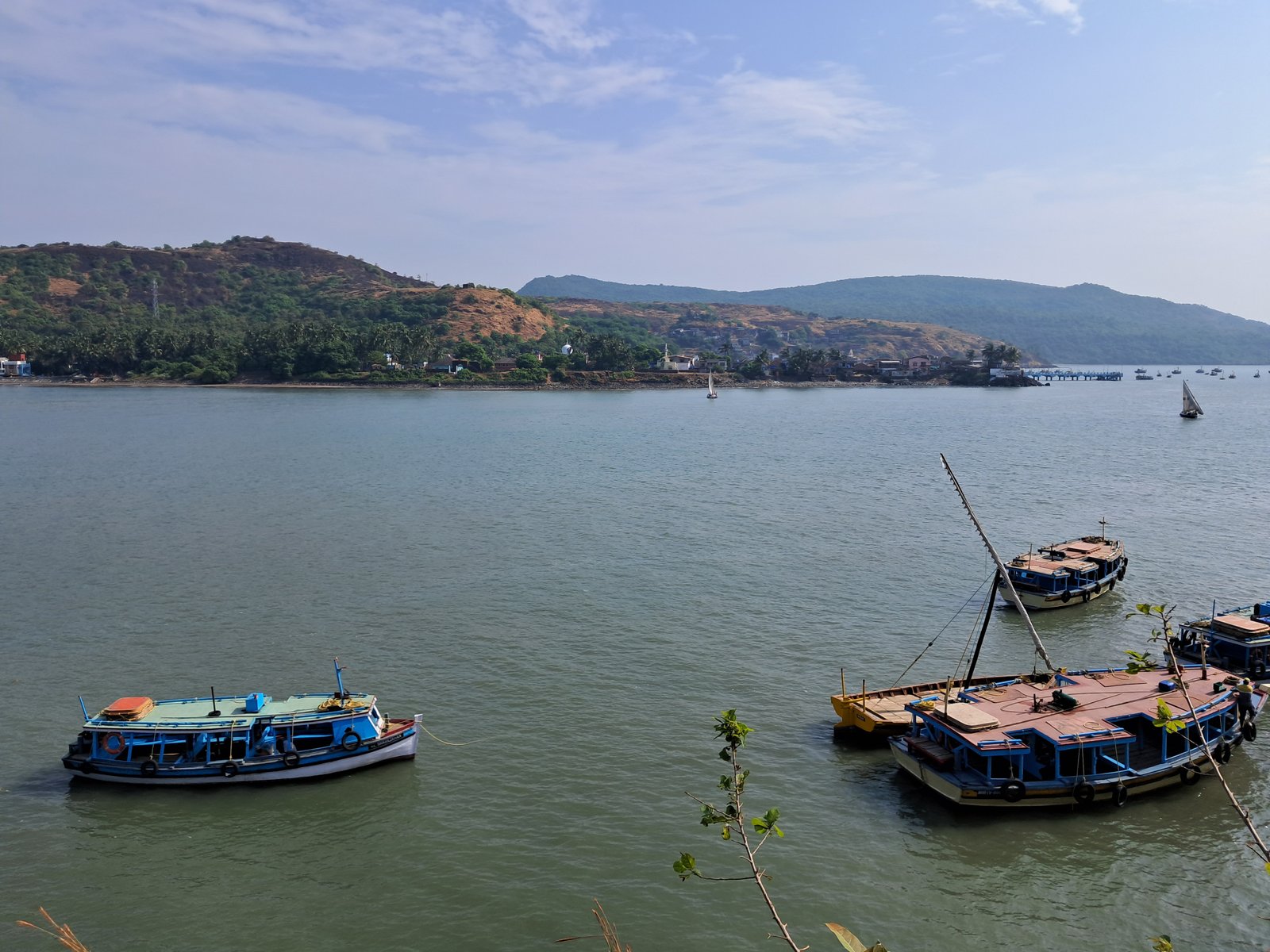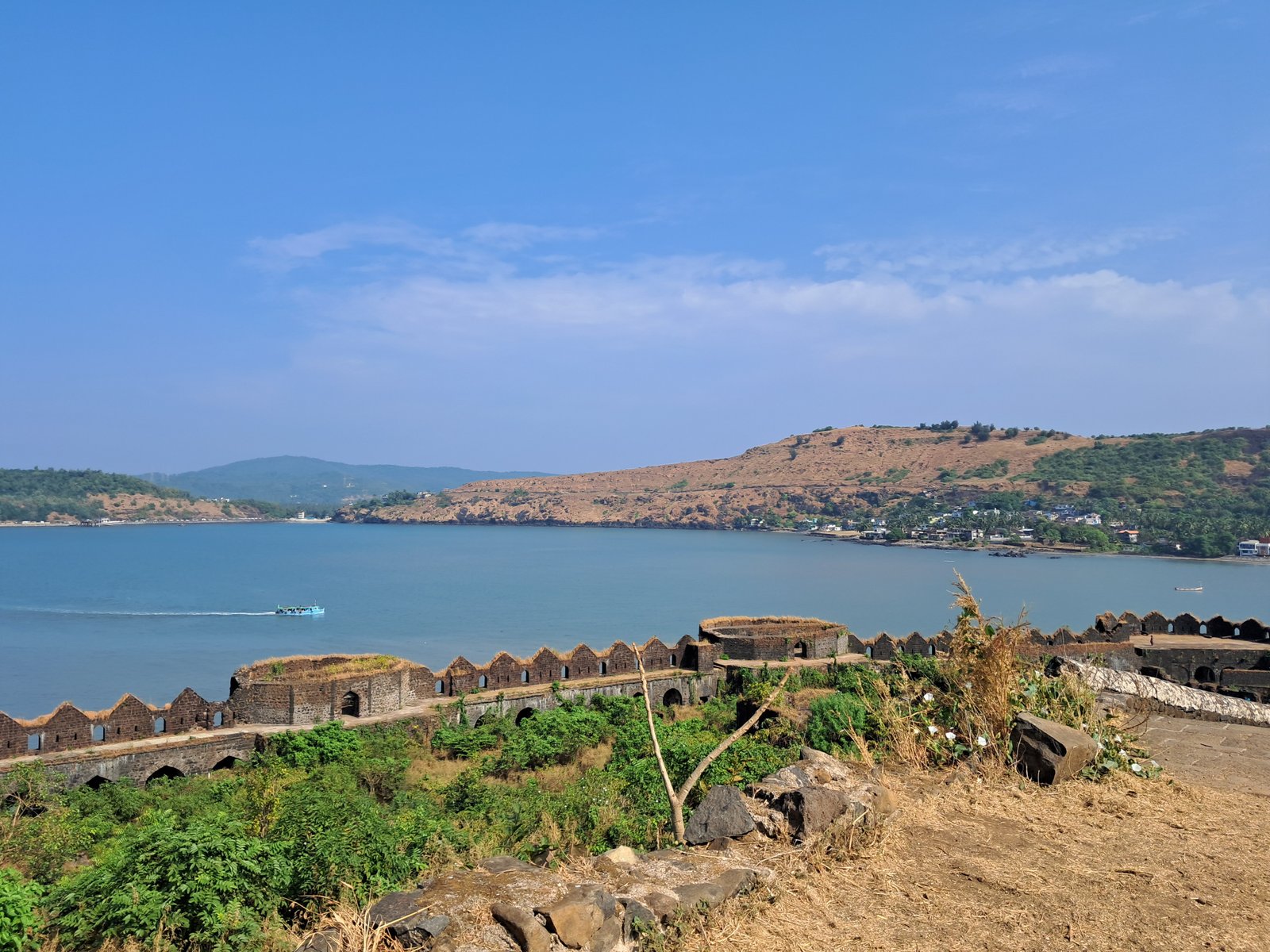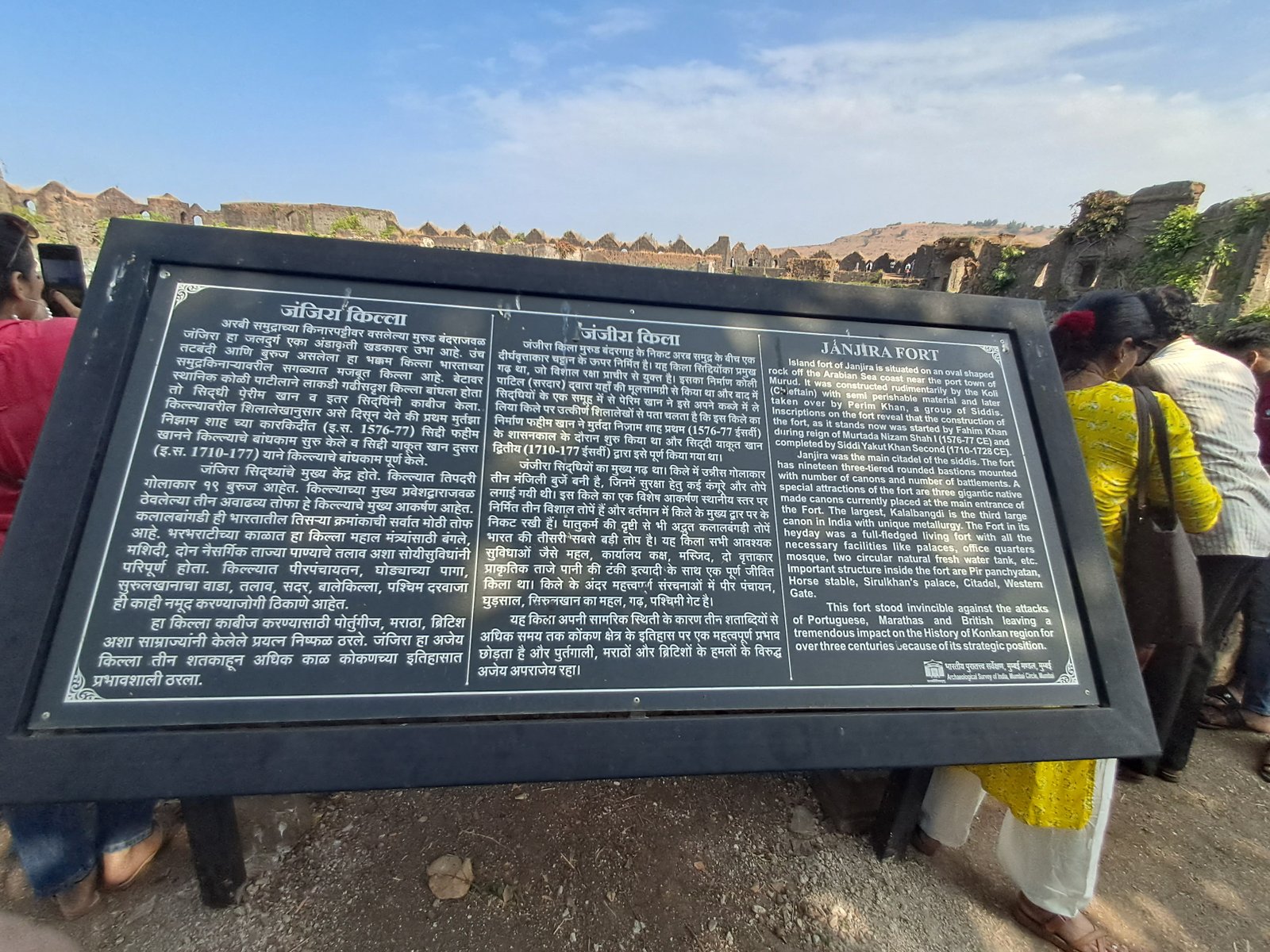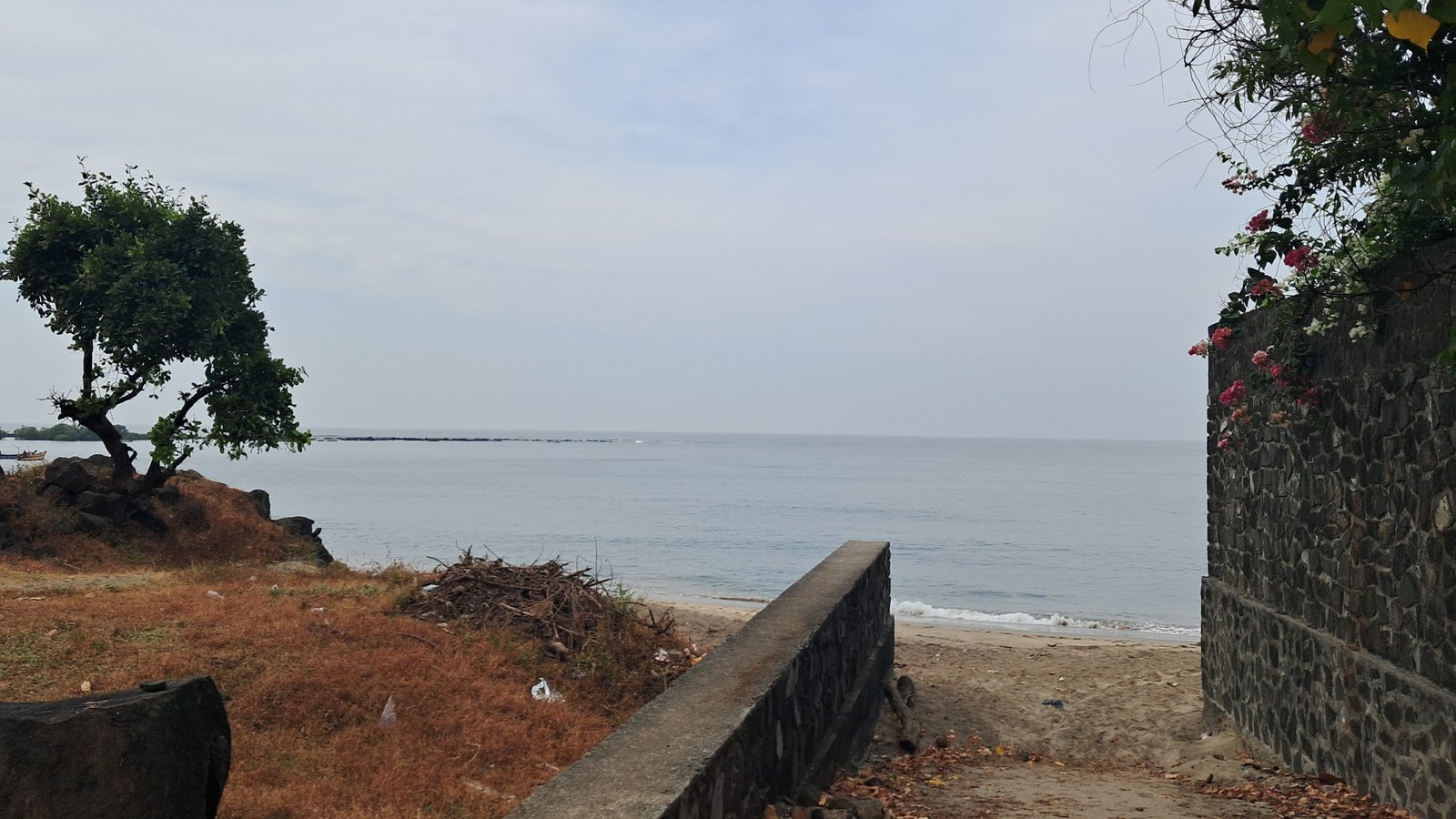We just moved to Vashi and wanted a break from city life, so we decided to head to Alibaug on our two-wheeler. Bright and early the next morning, we set off on our first long drive to Alibaug. Our plan was as follows: reach Alibaug by noon, spend some time exploring nearby beaches like Kihim, then head to Kashid by evening to stay overnight. The next day, we planned to visit Janjira Fort, and on our way back, spend some time at Phansad Wildlife Sanctuary before returning to our stay in Kashid. The following morning, we hit Kashid Beach for some watersports, checked out from our stay, and rode back to Vashi.
DAY 1

We left Mumbai, and as the Pen Road (Highway) unfolded before us, the traffic couldn’t dampen the refreshing sight of small houses, trees, and the charm of small towns. We took a brief stop at Pen for 10 minutes, enjoyed some tea, and continued our journey towards Alibaug. Maharashtra, India, has so much to offer that we know our next trip will likely lead us to new destinations. We always try to explore as much as possible, including famous food spots and activities. So, before hitting Alibaug, we visited Awas and Kihim beaches. Given the long weekend, these beaches, along with Alibaug, were quite crowded.
Upon reaching Alibaug, we were slightly disappointed by the waste and pollution on the beach. Our next stop was Colaba Fort, reachable by foot during low tide. It was around 11:30, and horse carts were also available from the beach to the fort.
Colaba Fort

Colaba Fort, situated near Alibaug in Maharashtra, is a testament to the region’s rich history. Constructed by the Portuguese in 1680, it was later captured by Chhatrapati Shivaji Maharaj, making it a significant Maratha stronghold. Now accessible during low tide, this coastal fort offers panoramic views of the Arabian Sea, intriguing visitors with its blend of natural beauty and historical architecture. Its remnants, including cannons and the fortification walls, narrate stories of past sieges and battles, attracting history enthusiasts and tourists alike to explore its legacy.
Although I looked up various stay options online, none seemed satisfactory. We decided to find accommodation 1-2 km away from the beach to stay within budget. “Shobha’s Guest House” seemed perfect. Over the phone, her voice was warm and welcoming, and the price was right, so we planned to head there in the evening. After lunch on the way, we arrived at Kashid Beach around 5 pm. It was a clean and one of the best beaches I have ever enjoyed, we enjoyed the sunset, and then checked into our stay. It was simple, clean, equipped with all basic amenities, and offered professional service, all for a fraction of what others charge in the area, about 4-5k per day at least. Set on a vast 7–8-acre land with a modest farmhouse build-up, the backside offered a sea view, leading us to the shoreline from the guest house. It felt like our private beach.
Photo’s from our homestay and beach






Day 2 : Murud-Janjira Fort, Phansad Wildlife Sanctury
After a day of traveling, we were quite tired. Our guest house provided only breakfast, so we ventured out to a nearby restaurant for dinner. Konkan is renowned for its seafood, but being vegetarians, we had to look a bit harder for good veg options. Pure veg restaurants are a rarity there. Once back in our room, we set an alarm, and the next thing we knew, we woke up ready to head to our next adventure, Janjira Fort. Janjira Fort is famed for being unconquerable, known as “Ajeya.” We took a boat from Rajapuri, called “Shidachi Hodi” in Marathi. The people on the boat shared stories and the history of the fort with us.



Janjira Fort

Janjira Fort, off the coast of Maharashtra, stands undefeated since the 17th century. Built by the Siddis, it is renowned for its 22 bastions and unique engineering, including a fresh water lake within its walls. Lesser-known is its hidden underwater gate, designed to thwart enemy entry, embodying resilience and architectural ingenuity.
On our way back to our stay in Kashid, we decided to visit the Phansad Wildlife Sanctuary. It’s celebrated for its coastal and Western Ghat biodiversity. We’re always keen on exploring parks, ecological zones, and becoming more knowledgeable about environmental conservation. Understanding the environmental issues and the richness of our planet is crucial for its future protection. I think the learn about our surrounding is first step towards contributing to that cause. While heading to Alibaug, we stumbled upon the “Native Biodiversity Garden,” a CSR initiative by the Shapoorji Pallonji Group. It wasn’t originally in our plans, but that brief stop taught us a great deal about native plants, their uses, significance, and much more.
Phansad Wildlife Sanctuary

Phansad Wildlife Sanctuary, located in the Konkan region of Maharashtra, is a vibrant mosaic of biodiversity. Covering an area of 6975 hectares, it forms a vital ecological corridor between the Western Ghats and coastal ecosystems. The sanctuary is a refuge for a plethora of fauna, including leopards, barking deer, and a variety of bird species like the Malabar Pied Hornbill and the Great Indian Hornbill. It is also home to smaller mammals such as the Indian giant squirrel and various species of reptiles and butterflies, highlighting its importance as a biodiversity hotspot and a must-visit for wildlife enthusiasts, Bird lovers.


While heading back from Murud Janjira to Kashid, we decided to make a detour to Phansad. Although slightly off our planned route, we were intrigued by the idea of staying in the guest houses available at the wildlife sanctuary. Unfortunately, they were closed due to some reasons. Visitors are permitted to walk up to 6km inside, exploring certain spots where wildlife sightings are possible. However, the absence of jeeps or guides for those eager to learn about the local fauna without prior knowledge poses a challenge. We managed a brief walk but had to return to the gate by 5, which limited how far we could explore. Yet, the untouched dense forests felt sacred, hinting at the untold stories of the wilderness. The availability of guided tours would significantly enhance the experience within the wildlife sanctuary, presenting an opportunity for tourism development and a deeper appreciation of nature’s untouched beauty.

After returning to our stay post-dinner, we had a delightful chat with the owner, who kindly invited us for tea. Conversing with her and learning about the farmhouse’s history added a personal touch to our stay, making it feel more like a warm, welcoming home than just a homestay, all thanks to her hospitality. She then took us to the backside of the guesthouse, where we experienced what felt like our private beach. Although it’s not technically private property, an easement ensures it remains uncrowded and easily accessible from her property. After she left, we soaked in the serene and romantic morning atmosphere. Following breakfast, we headed to Kashid Beach for water sports, eagerly anticipating this part of our trip.


We returned home rich in memories, having immersed ourselves in the environment and history through the majestic forts. This trip was more than just a journey to the beaches; it was a perfect blend of romance, learning, and adventure, offering us insights and experiences that we’ll cherish forever.

